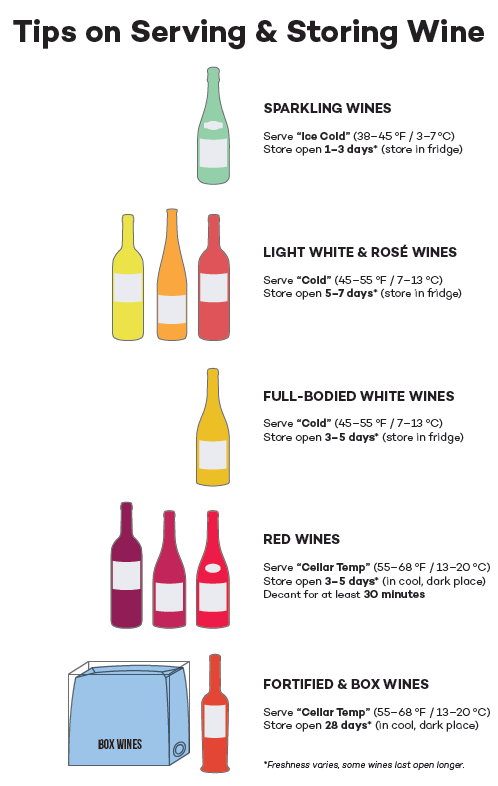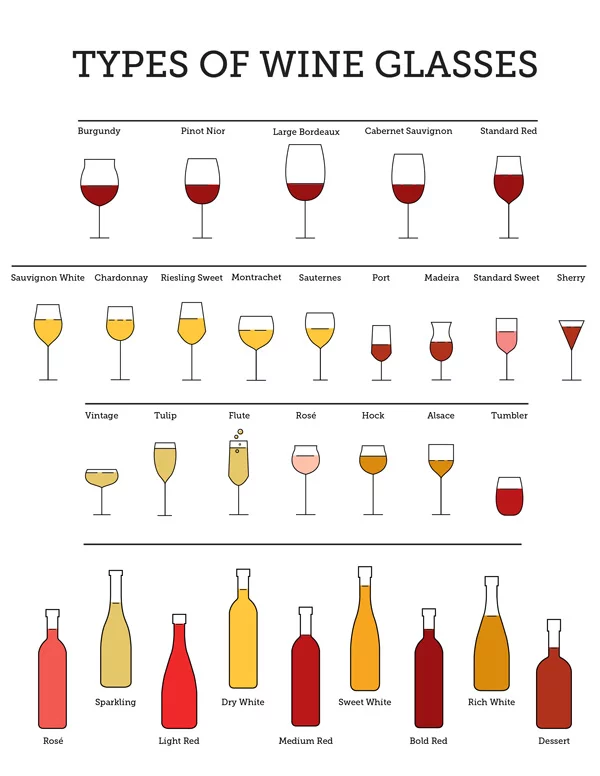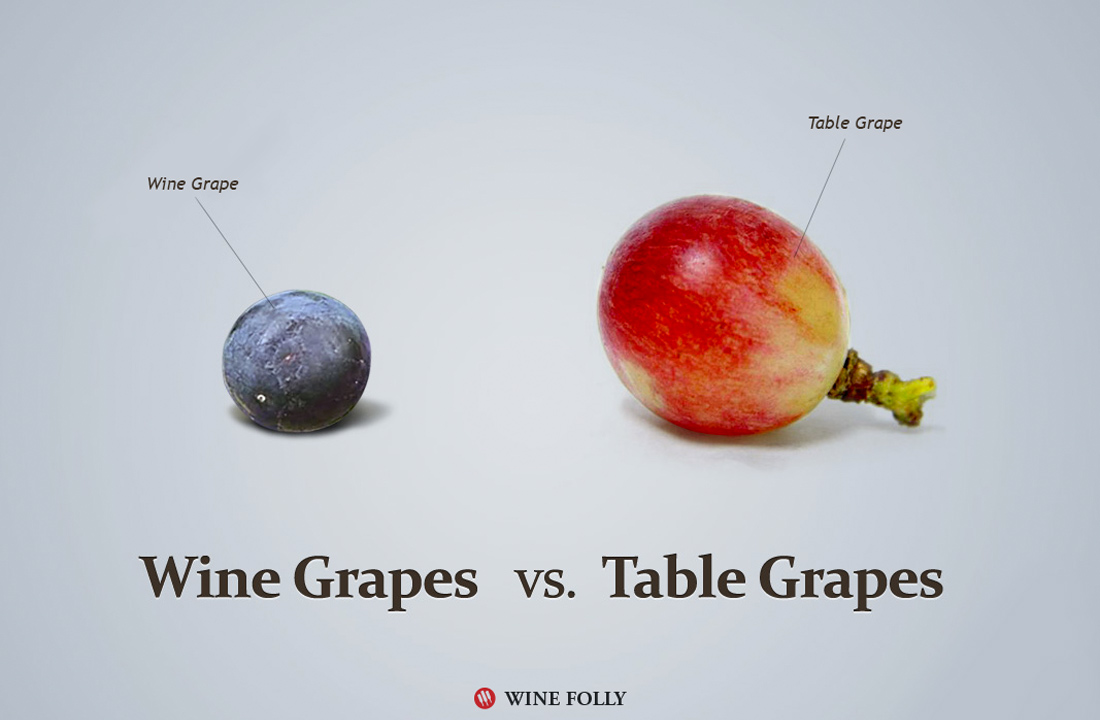
Wine Basics
Most wine is made with grapes, but they're not like the ones you find in the grocery store. Wine grapes (latin name: Vitis vinifera) are smaller, sweeter, have thick skins, and contain seeds. There are over 1,300 wine grape varieties used in commercial production but only about 100 of these varieties make up 75% of the world's vineyards.
What is Wine?
Wine is an alcoholic beverage made with the fermented juice of grapes. Technically, wine can be made with any fruit (i.e. apples, cranberries, plums, etc) but if it just says “wine” on the label then it’s made with grapes. (By the way, wine grapes are different than table grapes).
Speaking of differences, the difference between wine and beer is that beer is made from brewed grains that are then fermented. So very simply, wine is made from fruit and beer is made from grains.
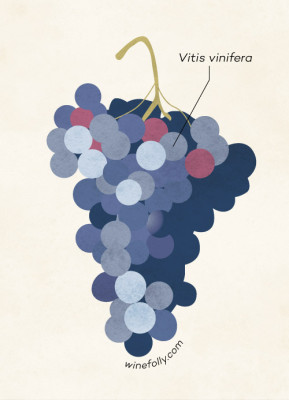
What are Wine Grapes?
Wine grapes are different than table grapes: they are smaller, sweeter and have lots of seeds. Most wines are made with a single species of grape that originated in Caucasus called Vitis vinifera. There are thousands of different varieties within the Vitis vinifera species–the most common is Cabernet Sauvignon.
The Origin of the term “Vintage”
Wine grapes take an entire season to ripen and thus, wine is produced just once a year. This is where the term vintage comes from: “Vint” stands for “Winemaking” and “age” implies the year it was made. So, when you see a vintage year listed on the label, that’s the year the grapes were picked and made into wine. The harvest season in the northern hemisphere (Europe, US) is from August–September and the harvest season in the southern hemisphere (Argentina, Australia) is from February–April
The Taste of Wine
There are several facets that explain wine’s unique flavor: acidity, sweetness, alcohol, tannin, and aroma compounds produced in fermentation.
Acidity: Wine as a beverage lies on the acidic end of the pH scale ranging from as low as 2.5 (lemon) to as high as 4.5 (greek yoghurt). Wine tastes tart.
Sweetness: Depending on what style of wine you drink, sweetness in wine ranges from having no sugar at all to sweet like maple syrup. The term “dry” refers to a wine without sweetness.
Alcohol: The taste of alcohol is spicy, palate-coating and warms the back of your throat. Wine’s average range of alcohol is about 10% ABV (alcohol by volume) to 15% ABV. Of course, there are a few exceptions: Moscato d’Asti is as low as 5.5% ABV and Port is fortified with neutral brandy upping it to 20% ABV.
Tannin: Tannin is found in red wines and contributes to the astringent quality of red wine. Put a wet, black tea bag on your tongue for a great example of how tannin tastes.
Aroma Compounds: Within the tiny minutia of wine (the phenols, esters, higher alcohols, acids, etc) is where you’ll find the complexities to wine’s flavors and aromas. Each grape variety exhibits aroma compounds at different levels. This is why some wines smell like berries and others smell like flowers. Another contributing factor to wine’s aromas is aging. Nearly all red wines are aged in oak, which not only contributes an oak barrel’s flavor compounds (like vanillan) but also acts as a conduit to expose the wine to oxygen. Oxidation and aging produce a range of unique flavors to wine including nuttiness, and dried fruit/flower flavors.
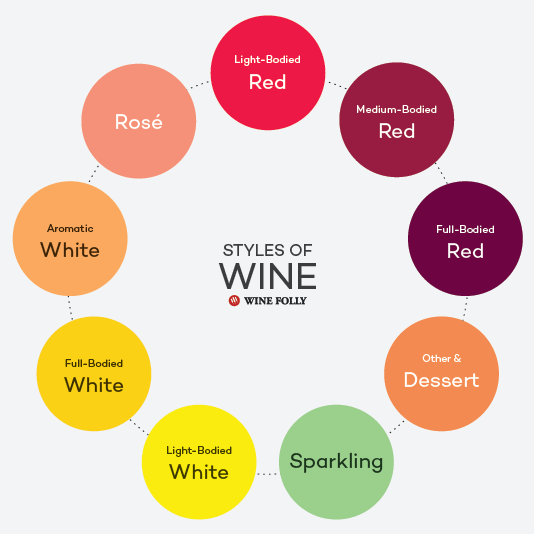
The nine basic styles of wine
With so many options out there, how do you hone in on your favorites? Well, as diverse as wine is, most wines can be categorized into 9 styles. Once you try each of the 9 styles, you’ll have a pretty good idea of what you like and don’t like:
Sparkling Wines: Sparkling wines are characterized by carbonation caused from a second fermentation. This gives bubbly wines distinct yeasty and bready aromas.
Light-Bodied White: Light-bodied, easy-drinkingzry white wines may not command high prices, but are some of the most-sold wines in the world (even if red wines get more attention.) Light whites have increased acidity and thus, pair with a wide array of cuisines. Aromas range from sweeter stone fruits to savory, herby, and peppery flavors.
Full-Bodied White: Full-bodied white wines are great wines for red wine lovers because of their rich smooth taste and subtle creamy notes.
Aromatic White: Expect explosive, perfumed aromas that spring out of the glass. Aromatic whites are available in dry or sweet styles, but often taste a touch sweet because of their sweet aromas.
Rosé Wine: Rosé is made by “dyeing” the wine for a short time with red grape skins. Rosé first became popular in the
late 1700’s when French Bordeaux wines imported to England had a pale color and were called Claret.
Light-Bodied Red: Light-bodied red wines are typified by their translucent color, light tannin, increased acidity, and delicate, floral-herbal aromas.
Medium-Bodied Red: Not too light nor too heavy, this is the “baby bear” red wine style. There are a wide array of choices (and thus, flavors) in this red wine category. Tannin is moderate, and expect most to have slightly higher acidity.
Full-Bodied Red: Full-bodied red wines are the deepest, darkest, and highest in tannin of the red wines. Despite what you might have heard about it, tannin is what gives wine antioxidant properties. Additionally, it ensures many of these wines will age for decades.
Dessert/Other Wine: In the 1800’s, sweet wines were more popular than dry wines. In fact, several of the most exalted wines in the world, from Sauternes in Bordeaux to Tokaji Aszú from Hungary, will age just as long as bold red wines (or longer!).
Serving Wine and Choosing Glassware
Wine is a peculiar beverage. It's handy to know the best practices for serving, handling and storing wine – including choosing the right glasses for your occasion.
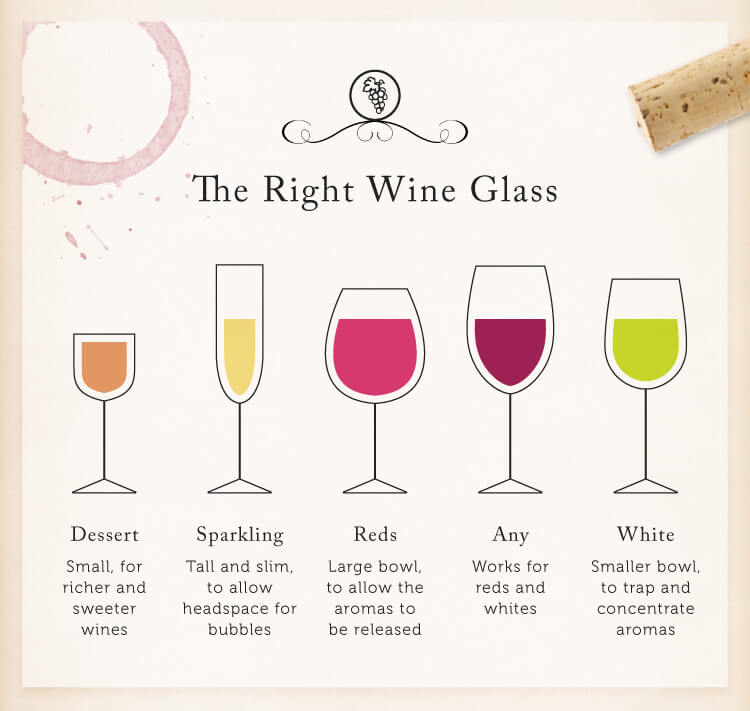
The Importance of a Proper Glass
Using the right glass improves the taste of wine. And they won’t cost you a fortune either.
There is now there is a piece of scientific evidence that supports the importance of glass shape.
In 2015, a Japanese medical group used a special camera to record images of ethanol vapors in different glasses. In their study, the research group showed how different glass shapes affected the density and position of vapors at the openings of different glasses.
Why do vapors matter? Well, they carry aromatic compounds into your nose. Aromatic compounds are responsible for producing the vast majority of flavors in wine.
